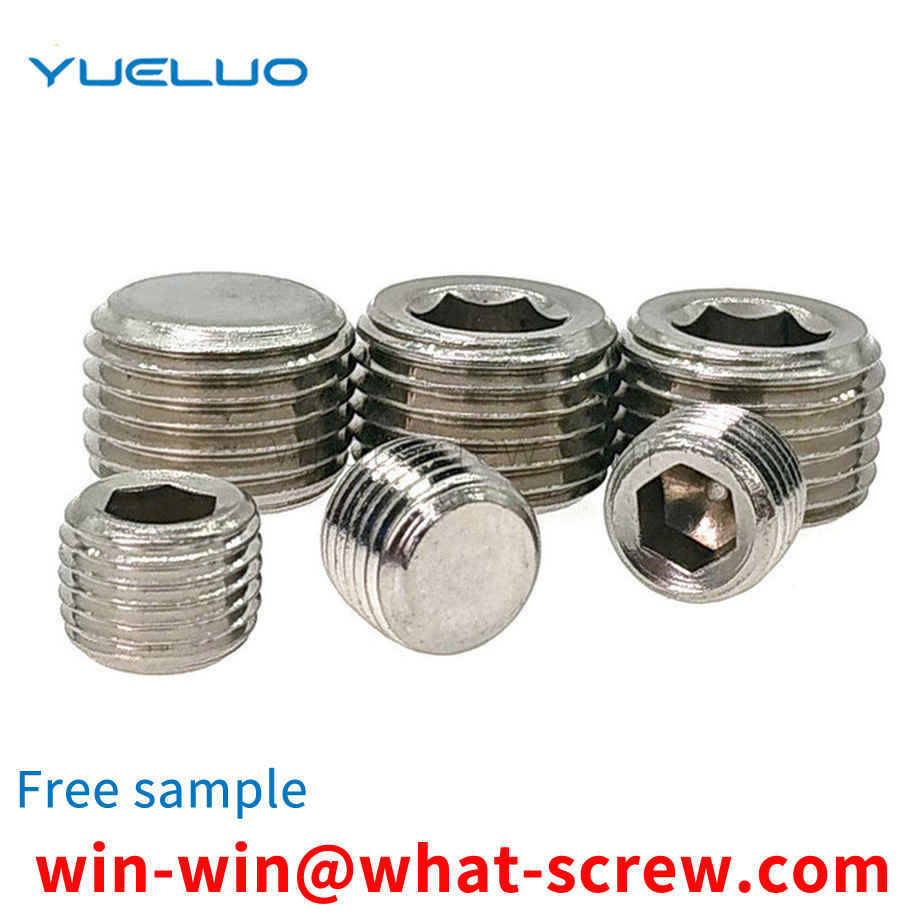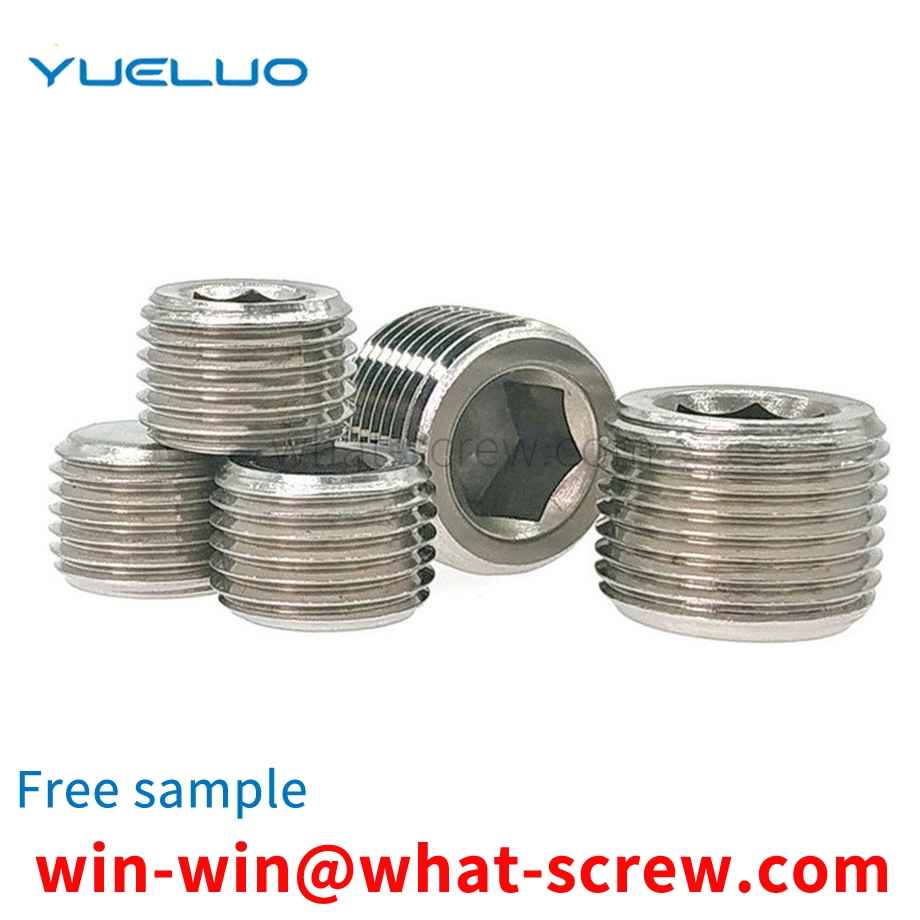Blind hole installation type rivet is a kind of rivet for single-sided riveting. When riveting, special riveting tools, such as pull riveting, rotary riveting, etc., are required. Blind hole installation type rivets are especially suitable for riveting occasions where it is inconvenient to use ordinary rivets to be riveted from both sides. At present, blind hole type blind rivets mainly include rivet blind rivets and blind blind rivets. Most blind rivets of blind hole type contain a lock ring, through which the core rod is locked into the nail sleeve, and there is a common lock ring. Risks of falling off, insufficient clamping force, etc., and the matching relationship of each sub-part in the processing process must be strictly coordinated to ensure the best installation effect; most of the screw-type blind rivets screw the thread through the driving nut to make the nail body or pipe The body is deformed to form a bulge, and the clamping force and anti-vibration ability after installation are much stronger than that of the rivet type, but there are also many sub-parts to drive the nut, mandrel, nail body, tube body, the processing process and the matching of each sub-part When the thickness of the interlayer is different, the fractured part of the core rod is not flush with the interlayer board. For the installation parts with high flatness requirements, air tools are often required to mill them flat.
Align the four positioning holes 12-5 of the spring washer positioning plate 2 with the four positioning columns 4 of the screw tray 1, and place them on the screw tray 1. Several screws 5 are passed through the lower positioning plate 12-2 in turn. The spring washer hole 2-7, the opening slot 12-32 of the baffle plate 12-3, the inner ring of the spring washer 7 in the spring washer hole 2-7 of the upper positioning plate 12-1, hold the spring washer positioning plate 2 by hand The raised handle 12-31 of the baffle plate 12-3 pulls the baffle plate 12-3 out of the upper positioning plate 12-1 and the lower positioning plate 12-2, and several spring washers 7 pass through the holes on the lower positioning plate 12-2. The spring washer holes 2-7 fall down along the screw rod of screw 5, so that the screw rod of screw 5 penetrates into the spring washer 7, as shown in Figure 10, and then the spring washer positioning plate 2 is removed to complete the process of threading the spring washer.
As a standard part, it should have its own general specifications. For hexagonal nuts, the commonly used standards are: GB52, GB6170, GB6172 and DIN934. The main differences between them are: GB6170 is thicker than GB52, GB6172 and DIN934. Thick from DIN934, commonly known as thick nut. The other is the difference between the opposite sides, the opposite sides of DIN934, GB6170 and GB6172 in the M8 nut series are 13MM smaller than the opposite side 14MM of GB52, and the opposite sides of M10 nuts, DIN934 and GB52 are 17MM. The opposite side of GB6170 and GB6172 should be 1MM larger, M12 nut, DIN934, GB52's opposite side is 19MM larger than GB6170 and GB6172's opposite side 18MM is 1MM larger. For M14 nuts, the opposite side of DIN934 and GB52 is 22MM, which is 1MM larger than the opposite side of GB6170 and GB6172, which is 21MM. The other is the M22 nut. The opposite side of DIN934 and GB52 is 32MM, which is 2MM smaller than the opposite side of GB6170 and GB6172, which is 34MM. (Besides the thickness of GB6170 and GB6172 are the same, the width of the opposite side is exactly the same) The rest of the specifications can be used in general without considering the thickness.
Therefore, how to provide a socket nut, a fastener and an installation method thereof that are more firmly connected and can be applied to thin-walled profiles is a technical problem to be solved by those skilled in the art.
M4 grounding screw used to fix the grounding wire on household appliances and other equipment, the stud is cylindrical, and the thread is perpendicular to the end (section) surface. However, the screw holes on the equipment all have tapping guide grooves for sinking and guiding due to the manufacturing process requirements. When fixing the ground wire, if the screw is not positioned accurately (the screw is inclined), the screw is pressed down hard, which is easy to cause the screw and the screw. The screw hole bites the teeth, and after biting the teeth, it is easy to cause the screw to loosen or fall off, posing a safety hazard.
We have many years of experience in the production and sales of screws, nuts, flat washers, etc. The main products are: GB878 slotted external thread cylindrical pins, complete sets of screws, all-metal hexagonal flange surface locking nuts, non-slip self-locking nuts and other products, we We can provide you with the right fastener solution for you.



















 Service Hotline
Service Hotline




